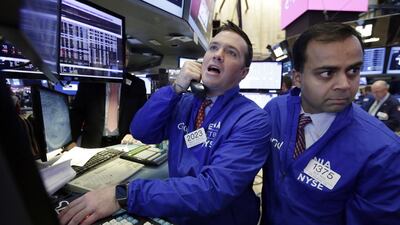Since the US election almost a month ago, the rally in financial markets has continued relatively unabated and even begun to broaden out as key uncertainties have reduced.
Investors are becoming more comfortable with the outline of the new Trump cabinet, even as some prominent positions remain to be filled. The economic data has been consistently strong, removing residual fears that growth could falter. And the Opec deal has helped to foster a greater sense of stability in one of the key global markets, as well as giving a further boost to inflation expectations.
Barring near-term shocks this year-end rally looks capable of extending. However, a US rate hike still lies ahead and a less dovish European Central Bank may also inject a bit more caution into proceedings, reminding markets that another January implosion may still be around the corner.
While doubts about what the Trump presidency will really look like still remain, the transition is going relatively well with key appointments being seen as positive for growth. In particular Donald Trump’s choices for the commerce department, Wilbur Ross, and for the treasury, Steve Mnuchin, are being viewed favourably as candidates who will generate US jobs and promote “sensible” trade, with some of the earlier concerns about outright US protectionism starting to fade. Furthermore, large corporate tax cuts from 35 per cent to 15 per cent look set to be proposed, providing grounds for believing that US growth can return to a 3 to 4 per cent pace.
US economic growth has also been resilient, even appearing to be accelerating well before any stimulus measures are legislated for, let alone come into effect. The unemployment rate fell to 4.6 per cent in November from 4.9 per cent, its lowest level since August 2007, and while earnings growth remains elusive job growth appears to be ending the year on a high, with other indicators also pointing to another relatively strong quarter after third-quarter growth was already revised up to 3.2 per cent.
Outside the US, the global picture has also been improving, with European activity readings picking up some momentum, inflation starting to firm and the labour markets showing signs of a broad improvement. The fallout from the Brexit referendum has so far been less dramatic than initially feared, with the UK economy also performing relatively strongly, much to the surprise of prominent bodies like the IMF and OECD. Japan’s GDP has even surprised positively, while downside growth shocks have been relatively few.
The Opec deal is also constructive for oil prices, for broader financial market stability and also for this region as well as other commodity producing economies. It is also positive for global inflation expectations, which had already been given a boost by Mr Trump’s expansionary fiscal plans. To the extent that it reinforces these trends that were already under way, the Opec deal provides greater fundamental underpinning to the sell-off in bonds and to the general mood of reflation that has taken hold.
The rally in markets looks to be on relatively solid ground as the final weeks of the year begin. The coming two weeks could still bring events that test their durability, potentially even reminding investors of the events of last year that ultimately led to January’s sharp sell-off. European politics will of course be front and centre this morning as election and referendum results come in from Austria and Italy.
Not only could a No vote in Italy put it potentially on the road towards its exit from the euro zone, but it could also trigger greater risks for the bigger French and German elections next year.
The ECB’s message later this week may also insert caution into market recoveries. Few if any expect any immediate change in ECB monetary policy, but a slight tapering of its quantitative easing from next year or more nuanced communication would remind investors that the days of limitless liquidity are coming to an end. And while a Fed rate hike in 10 days’ time is more or less guaranteed, the greater concern will be about the message of the Fed as it sets out its stall for 2017.
A year ago the Fed began its normalisation policy in December, which markets initially seemed to take in their stride. It was only when they returned from their holidays in the new year that the real reaction was seen.
Tim Fox is the chief economist and head of research at Emirates NBD.
business@thenational.ae
Follow The National's Business section on Twitter


